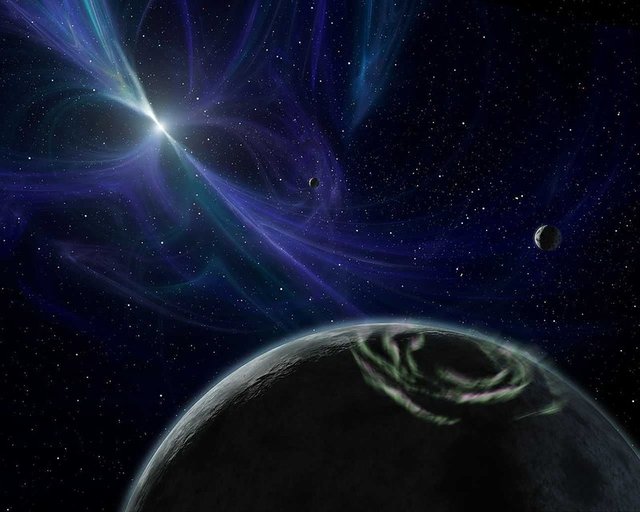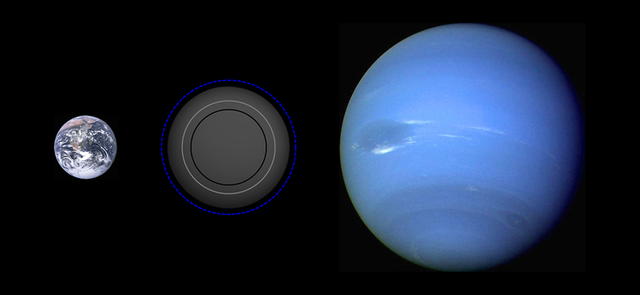Neutron star planets: can they be habitable?
Neutron stars, created in supernova explosions, are the densest objects in the universe. With radius about 10 km, they can have masses of about twice that of the Sun. Pulsar is a sort of neutron stars, emitting strong beams of electromagnetic radiation what makes them detectable. Neutron stars begin their lives surrounded by a fallback debris disk with a mass of order 0.1 to 0.2 Msun, similar to protoplanetary disks. In this second live neutron stars can planets as a normal stars do.

Image: NASA/JPL-Caltech/R. Hurt (SSC) - Phobetor in the foreground
There are three ways how planets may exist in neutron star system. First generation planets would be formed in the usual manner, as a by-product of the star formation process, and would likely be ablated or unbound during stellar death. Second gneration planets would form in the in the supernova fallback disk around a freshly-formed neutron star. And Third generation planets would form from a disk consisting of a disrupted binary companion (possibly previously overflowing its Roche lobe), thought to be essential for producing millisecond pulsars such as B1257+12
This last pulsar B1257+12 (it has also still informal name Lich) is located 2300 light years away in constellation Virgo. has three planets, discovered in 90th: the first is tiny - only mass 0.02 of Earth is named Draugr and orbits Lich in 25 days.
Second, Poltergeist, is a super earth with mass of 4.3 of Earth orbits Lich in 66 days at a distance of 0.36 a.u.
Third, Phobetor, is also a super earth, its mass is 3.9 of Earth, and distance from Lich is 0.46 a.u.

Image: Aldaron, a.k.a. Aldaron - Own work - size comparizon of Earth, Poltergeist and Neptune
In new study, astronomers from the Netherlands, Alessandro Patruno and Mihkel Kama have shown that the harsh environment around neutron stars can still accommodate planets with warm atmospheres, provided they are Super-Earths. They addressed the effect of radiation produced by neutron stars on planetary atmospheres and defined a habitable zone for the particular case of low UV/optical radiation, moderate X-ray, and high gamma-ray and relativistic particle flux. If part of the pulsar power is injected in the atmosphere, all of the three PSR B1257+12 planets may lie in the habitable zone. Moreover, if these planets (or one of them) have a moderately strong magnetosphere, then its atmosphere can survive strong pulsar winds (flux of electromagnetic radiation from charged particles) exist for billion years.
If life exists there, it must be far beyond what I can imagine. We have extremophiles here on Earth, so I know things can live in area that we think are impossible.
Neutron stars always fascinated me - since I've read Larry Niven's novel Neutron star . This one is awesome. Would be great to know more about it